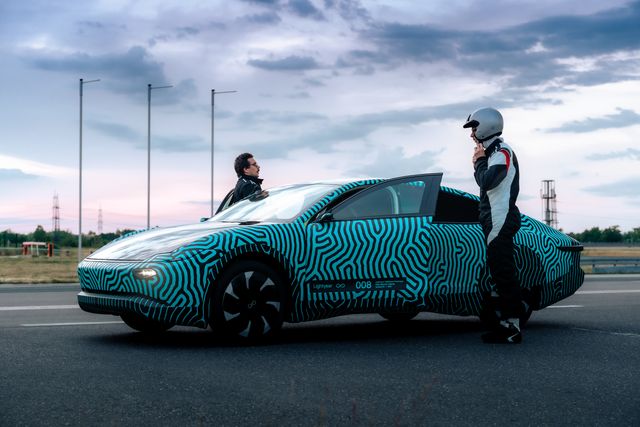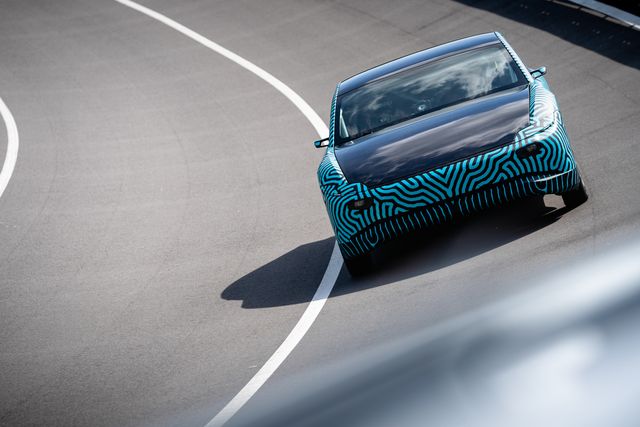Solar car prototype from Lightyear drives 710 kilometers on a single charge.
- The Lightyear One is the first long-range solar electric vehicle in the world.
- The prototype automobile of Lightyear One covered 710 kilometres on a single 60-kWh battery charge.
- By showing long-range performance on a test track, Lightyear achieves a significant technological milestone.
Helmond, The Netherlands, July 8, 2021 – Lightyear, the solar electric vehicle pioneer, has set a key technological milestone with its Lightyear One prototype car, which has a range of 710 kilometres. Never before has an electric vehicle been able to travel such a great distance on such a small battery. The first model of Lightyear One will go into production in 2022 as an exclusive series of 946 cars.
“After four years of hard work and in-house development, this is a very important engineering and technological milestone. It validates the performance of our patented technology and truly shows that we are able to deliver on our promise to introduce the most efficient electric vehicle. This prototype has over 710 km of range with an energy consumption of only 85 Wh/km at 85 km per hour. Even the most efficient electric cars in the market today consume around 50% more energy at this relatively low speed”, says Lex Hoefsloot, CEO and co-founder of Lightyear. “This milestone is a great confirmation of the scalability of our business model. We are confident that in the coming months, we will be able to reach a similar level of energy consumption at highway speed. Lowering the energy consumption per mile of an EV means that you can provide a lot of range on a small battery. Because batteries are the most expensive part of an EV, you can lower the purchase price of the car and achieve affordable electric cars with a lot of range which don’t need a lot of charging. Low-energy consuming cars can also benefit a lot more from adding solar cells to the car and gain about 72 km of charge on a sunny day.”
Also Read: UK’s first vehicle-to-everything road safety system goes live.
[email-subscribers-form id=”1″]

The prototype car was put through its paces at the Aldenhoven Testing Center in Germany, where it completed a full drive cycle at 85 km/h on a single 60 kWh battery charge. The comprehensive test covered everything from solar panel yield to battery performance to cooling system energy usage, as well as the operation of the in-wheel motors and the software that controls the solar car.
The completed full drive cycle test is an important step in verifying and validating all of the vehicle’s performance assumptions. Other planned tests connected to the homologation process, like as crash testing and an official WLTP drive cycle test, are in addition to the confirmation of the car’s technical performance.
Lightyear is preparing to industrialise and manufacture Lightyear One as part of his aim to make clean transportation accessible to everyone, everywhere. The idea of a long-range solar car represents a significant chance to alter mobility by allowing you to drive for months without needing to recharge. In the first half of 2022, an exclusive series of 946 Lightyear Ones will be produced. Beginning in 2024, Lightyear plans to target the mass market.

Lightyear is on a mission to make clean mobility available to everyone, everywhere. Lightyear aims to eliminate the two biggest concerns for an electric car – charging and range – with an energy-efficient design and integrated solar cells. This allows motorists, depending on the climate, to drive up to twenty thousand kilometres per year on the power of the sun. The fast-growing company was founded in 2016 and currently employs more than two hundred employees. The team is made up of a mix of young talent and experience from the automotive industry, including former employees of Tesla, Jaguar, Landrover, Audi, McLaren and Ferrari. In 2019, Lightyear received the Horizon 2020 grant from the European Commission under grant agreement number 848620. In the summer of 2019, Lightyear launched its first driving prototype, Lightyear One, and opened a new office. The prestigious TIME Magazine acknowledged Lightyear One as one of the ‘100 best inventions’ of 2019. In 2020, Lightyear won the ‘Rising Star’ and ‘Most Disruptive Innovator’ Award of the Technology Fast 50 program organized by Deloitte.

